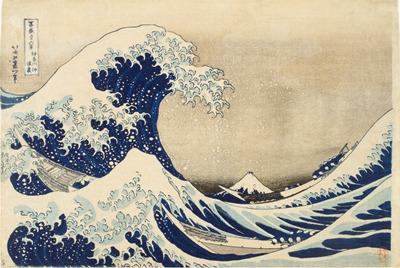Some of the great masterpieces of our Japanese art collection are by the famous artist Katsushika Hokusai, who lived in the eighteenth and nineteenth centuries. In addition to iconic works like The Great Wave and South Wind, Clear Dawn, our holdings of Hokusai prints have dramatically increased in the last few years, thanks to a remarkable gift in 2006 from the Joan Elizabeth Tanney Bequest, followed by a gift of the complete set of eight prints from Hokusai’s series A Tour of Waterfalls in the Provinces. Opening Saturday in the Pavilion for Japanese Art is Japanese Prints: Hokusai at LACMA—our first Hokusai exhibition since 1997. This is a great opportunity to see a variety of masterful prints by this incredible, influential artist.
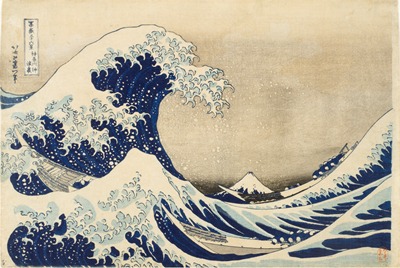 Katsushika Hokusai, The Great Wave off Kanagawa, c. 1830–31, gift of the Frederick R. Weisman Company
Katsushika Hokusai, The Great Wave off Kanagawa, c. 1830–31, gift of the Frederick R. Weisman Company
You may also notice something a little less traditional inside the Bruce Goff-designed Pavilion for Japanese Art—intervention is by Stephen Prina, related to his As He Remembered It exhibition on view across campus in BCAM, which opened last week. (FYI: Prina will be at LACMA next week for a free conversation with Michael Govan, plus a screening of Prina’s film The Way He Always Wanted It II, which also takes Bruce Goff’s architecture as its subject.)
Finally, while you’re in the pavilion, make some time to see our most recent major acquisition—Cranes, by Maruyama Okyo, created a generation earlier than Hokusai’s prints. Cranes a beautiful pair of screens depicting seventeen cranes—twelve Red-crowned cranes, five White-naped cranes—surrounded by gold leaf on paper.
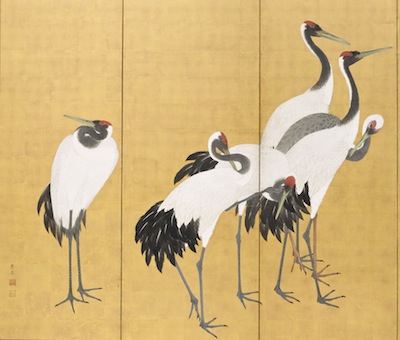 Maruyama Okyo, Cranes (detail), 1772 (An’ei period, 1772-1780), gift of Camilla Chandler Frost in honor of Robert T. Singer
Maruyama Okyo, Cranes (detail), 1772 (An’ei period, 1772-1780), gift of Camilla Chandler Frost in honor of Robert T. Singer
There’s a lot happening on the east side of our campus at the moment, in addition to all the activity in the Japanese Pavilion. Inside the Hammer Building you’ll find Ming Masterpieces from the Shanghai Museum—the title says it all, but let me add that these are masterpieces rarely seen in the United States. Across the way you’ll find the ever-popular Stanley Kubrick (did you read the excellent article about Kubrick in Entertainment Weekly?).
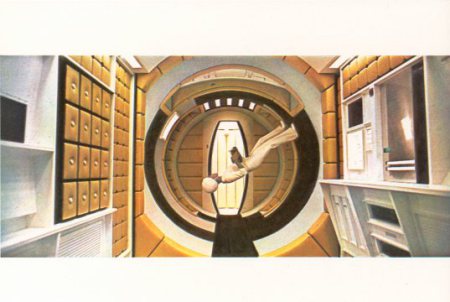 2001: A Space Odyssey, set photo, directed by Stanley Kubrick, 1965-68
2001: A Space Odyssey, set photo, directed by Stanley Kubrick, 1965-68
Upstairs from Kubrick is our new installation of works from our permanent collection of Latin American art. L.A. Weekly spoke to curator Ilona Katzew about the new installation, which includes objects from ancient to contemporary times, including recent gifts or Mexican modernist silver. We talked about that on Unframed earlier this week; come to LACMA on Sunday for a free talk on the subject.
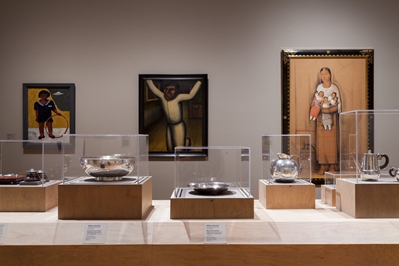 Installation view, Latin American art galleries
Installation view, Latin American art galleries
For families, both Saturday and Sunday offer great opportunities for fun. On Saturday, start your morning at Charles White Elementary School for a viewing of Shinique Smith: Firsthand, which features works by artist Smith, objects from LACMA’s costume and textiles collection, and art by Charles White students. We’ll have tours of the exhibition, a scavenger hunt, and art projects—all for free. If you prefer to head straight to LACMA instead, get here in time for bilingual Family Tours of the permanent collection. On Sunday we’ve got our usual FREE Andell Family Sunday activities.
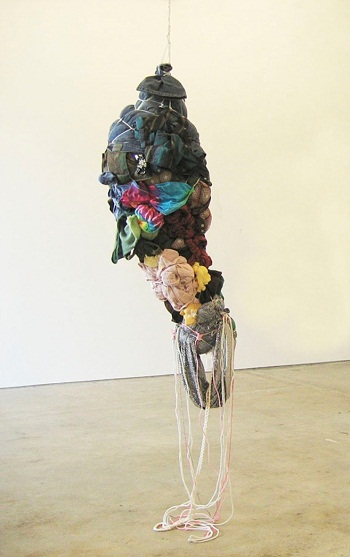 Shinique Smith, Swaying Beauty, 2007, gift of Schiff Fine Art, © 2013 Shinique Smith, photo © 2013 Museum Associates/LACMA
Shinique Smith, Swaying Beauty, 2007, gift of Schiff Fine Art, © 2013 Shinique Smith, photo © 2013 Museum Associates/LACMA
Close out your weekend with a free Sundays Live performance from the Colburn School Orchestra (Maxim Eskenazy, conductor), performing pieces by Vivaldi and Telemann.
Scott Tennent



